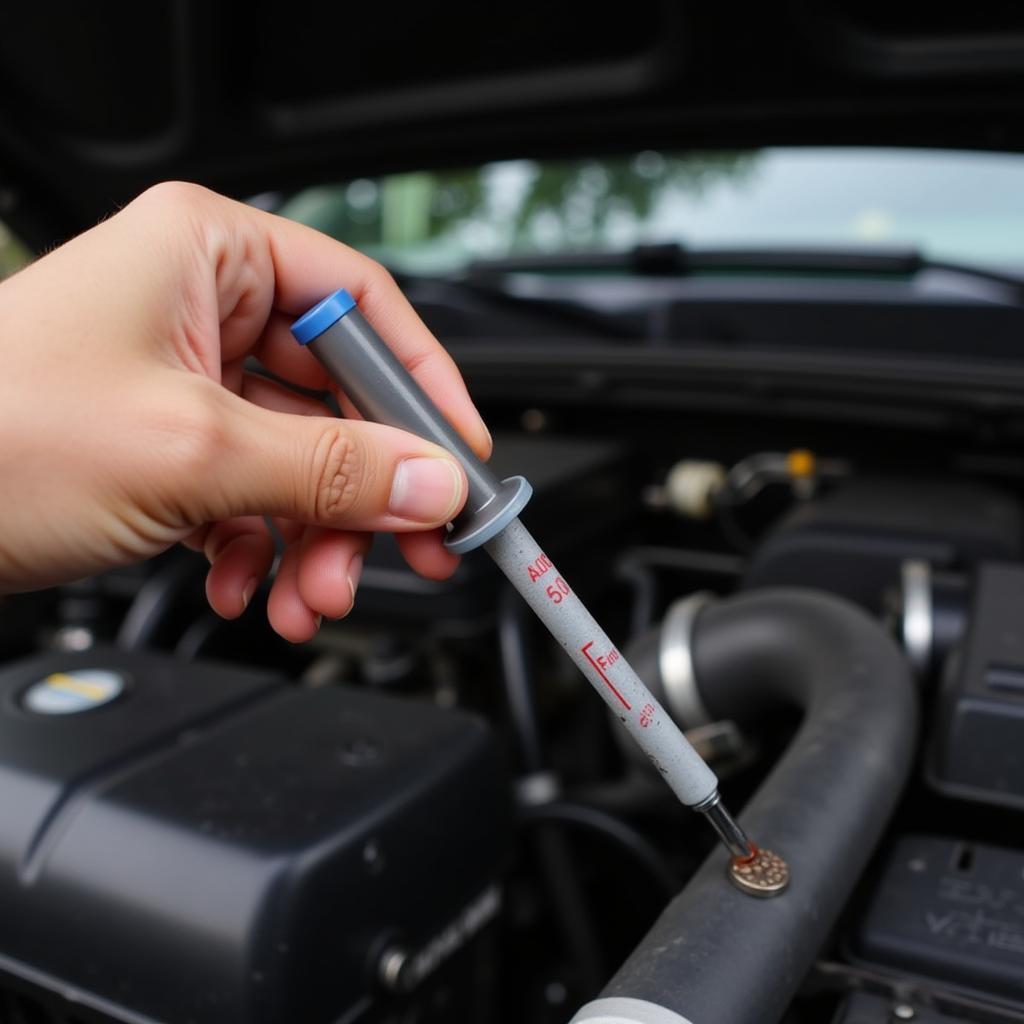Maintaining your car battery is crucial for a smooth and reliable driving experience. Modern vehicles often come equipped with maintenance-free car batteries, offering convenience and longevity. However, even these sealed units require occasional testing to ensure they’re functioning optimally. Knowing how to test a maintenance-free car battery can save you from unexpected breakdowns and costly repairs.
Similar to a used car maintenance checklist, testing a maintenance-free car battery is a preventative measure that can extend the life of your vehicle’s electrical system. This guide provides a comprehensive overview of how to test these batteries effectively, utilizing various methods to determine their health.
Understanding Maintenance-Free Car Batteries
Maintenance-free batteries are designed to minimize the need for regular fluid checks and top-offs. They achieve this through a sealed construction that reduces water loss. This design makes them a popular choice for modern vehicles. However, this doesn’t mean they’re immune to failure. Over time, the chemical reactions within the battery degrade, impacting its ability to hold a charge.
Why Test a Maintenance-Free Battery?
Regular testing can help identify potential issues before they escalate into a complete battery failure. This proactive approach saves you the inconvenience of being stranded with a dead battery. Early detection also allows you to replace the battery preemptively, avoiding potential damage to other vehicle components.
Methods for Testing a Maintenance-Free Car Battery
There are several ways to test a maintenance-free car battery, each offering varying levels of detail and accuracy. The most common methods include using a multimeter, a battery load tester, or visiting a professional for a computerized test.
Using a Multimeter to Test Your Battery
A multimeter is a simple and affordable tool that can provide a basic assessment of your battery’s voltage. With the engine off, connect the red lead of the multimeter to the positive (+) terminal and the black lead to the negative (-) terminal of the battery. A healthy battery should read around 12.6 volts. A lower reading indicates a potential issue.
What voltage is good for a maintenance-free car battery? A reading of 12.6 volts or higher generally indicates a healthy battery.
Utilizing a Battery Load Tester
A battery load tester applies a controlled load to the battery, simulating the demands of starting the engine. This test provides a more accurate assessment of the battery’s capacity and ability to deliver power under stress.
 Car Battery Load Tester in Action
Car Battery Load Tester in Action
Like the process outlined in how to test a maintenance-free car battery, a load test gives a more comprehensive understanding of the battery’s health. This is especially crucial in colder climates or during periods of high electrical demand.
Professional Battery Testing
Many auto parts stores and repair shops offer free battery testing using specialized equipment. These tests can provide a comprehensive analysis of your battery’s health, including its cold cranking amps (CCA) and state of charge. This is particularly helpful if you’re unsure about the reliability of your battery.
Signs of a Failing Maintenance-Free Car Battery
Even with regular testing, it’s essential to be aware of the common signs of a failing maintenance-free battery. These signs can include:
- Slow engine cranking
- Dim headlights
- Clicking sound when turning the key
- Electrical malfunctions
- Dashboard warning lights
Understanding these signs, alongside regular testing, can prevent inconvenient breakdowns. Much like the tips found in car maintenance covid-19, proactive care can prevent significant problems down the line.
Maintaining Your Maintenance-Free Car Battery
While maintenance-free batteries require less attention than traditional batteries, there are still steps you can take to prolong their lifespan. These include:
- Keeping the battery terminals clean
- Avoiding short trips
- Minimizing parasitic drain
- Having the battery tested regularly
Just as maintaining your car in Spokane is essential, regardless of location as discussed in spokane car maintenance, taking these steps can extend the life of your maintenance-free battery.
Conclusion
Knowing how to test a maintenance-free car battery is crucial for every car owner. Regular testing, combined with being aware of the signs of a failing battery, can help prevent unexpected breakdowns and ensure your vehicle remains reliable. If you need further assistance, feel free to contact us at AutoTipPro at +1 (641) 206-8880 or visit our office at 500 N St Mary’s St, San Antonio, TX 78205, United States.
 Mechanic Performing Car Battery Test in Workshop
Mechanic Performing Car Battery Test in Workshop
“Regularly testing your car battery, especially in extreme temperatures, can prevent costly repairs down the line,” advises John Smith, Senior Automotive Technician at Smith Auto Repair. He further emphasizes, “Don’t underestimate the importance of a healthy battery for your car’s overall performance.” Also, according to Sarah Johnson, Lead Electrical Systems Engineer at Johnson Automotive Solutions, “A simple voltage check can often reveal underlying issues before they become major problems. Early detection is key to maintaining a reliable vehicle.”
If you have questions or need car battery maintenance in Brigham City, you might find valuable information in car maintenance brigham city. Remember that proper battery maintenance can significantly impact your vehicle’s longevity and performance.






Leave a Reply